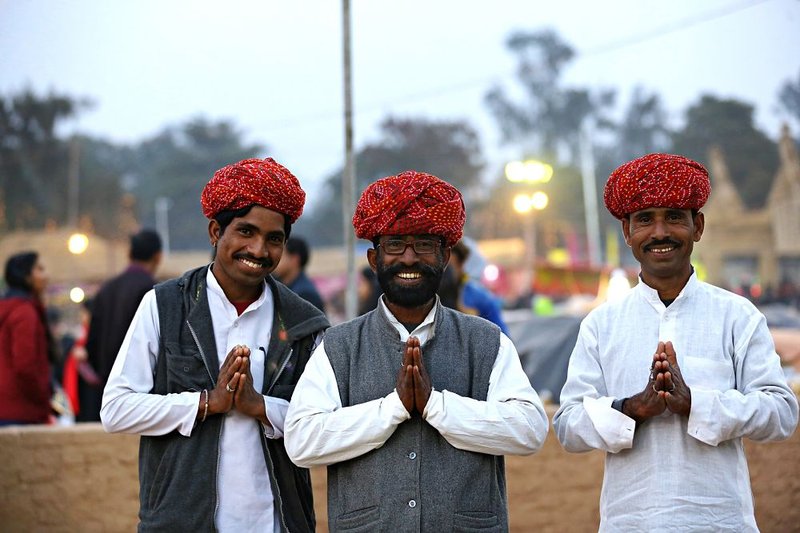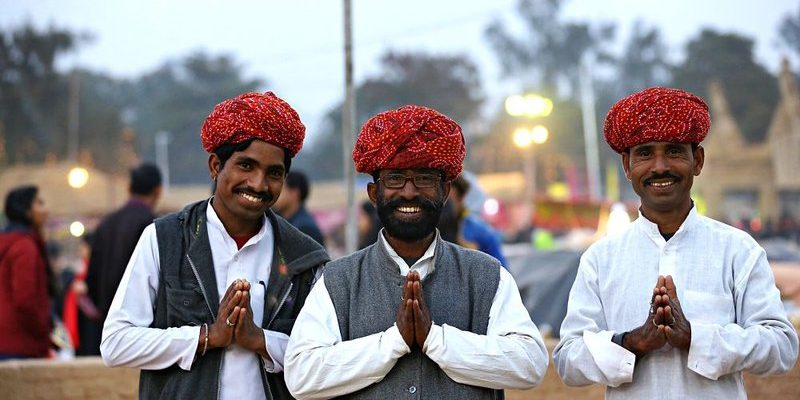
Have you ever seen a creature that looks like it stepped out of a painting? The Indian Painted Grasshopper is just that! With its vibrant colors and striking patterns, this grasshopper is like a living piece of art. Found primarily in India and parts of Southeast Asia, this insect captivates anyone lucky enough to spot one. But there’s more to these beautiful critters than meets the eye.
Aside from their stunning appearance, Indian Painted Grasshoppers play a vital role in their ecosystems. They’re part of a larger web of life, and understanding their habits can actually give us insight into the health of their environment. So, if you’ve ever been curious about how these grasshoppers live, what they eat, or how they mate, you’re in the right place!
Physical Characteristics
The Indian Painted Grasshopper is not just a pretty face. They can grow up to 8 centimeters long, making them one of the larger grasshopper species. Their bodies are adorned with a dazzling array of colors, ranging from bright greens to striking reds and yellows. This vibrant color palette isn’t just for show; it’s a brilliant adaptation that helps them blend into the floral backgrounds where they usually reside. Imagine walking through a garden filled with flowers, only to notice these little wonders camouflaged among the petals.
But it doesn’t stop at colors. The body shape is also quite unique. They have long, slender antennae that can be up to twice the length of their bodies! These aren’t just for decoration; they help the grasshopper navigate its environment and find food. When you see an Indian Painted Grasshopper, you truly witness the beauty of evolution—a mix of function and flair.
Habitat
The preferred habitat of the Indian Painted Grasshopper is typically found in warm, tropical regions. They thrive in areas rich in vegetation, such as grasslands and gardens. You might find them lounging on the leaves of plants or hopping around in the tall grass, basking in the sun. Their habitat is crucial not just for shelter, but also for finding food and mates.
Interestingly, these grasshoppers are often more active during the rainy season. This is when their food sources—like tender leaves and flowers—are abundant. You might say that the rain brings out the best in these beautiful insects, allowing them to flourish and multiply. But watch out! Their bright colors can also attract predators, so they need to be alert and ready to hop away at a moment’s notice.
Diet
What’s on the menu for the Indian Painted Grasshopper? These creatures are primarily herbivores, munching on a variety of plants. Their diet mainly consists of leaves, flowers, and stems, but they tend to favor softer, younger shoots. Imagine them as the little lawn mowers of the insect world—keeping the vegetation in check while they snack away! Eating a lot helps them grow and develop into adults, which is essential for their lifecycle.
One fascinating aspect of their diet is their selectivity. They have developed a keen sense of taste, which is crucial for avoiding plants that might be toxic. This means they carefully choose their meals, ensuring they get the nutrients they need while steering clear of anything that could harm them. This adaptability is really important in the wild, where not everything is safe to eat. It’s a delicate balance that keeps them healthy and thriving.
Life Cycle
The life cycle of the Indian Painted Grasshopper is nothing short of fascinating. They start as eggs, laid in the soil or among the foliage of plants. After a few weeks, the eggs hatch into nymphs, which look like smaller versions of the adults. It’s amazing how, at this stage, they begin their journey in life by feeding on leaves and small plants almost immediately!
As nymphs, they go through several molts, shedding their exoskeletons as they grow. Each molt brings them closer to becoming fully grown adults, and during this time, their colors become more vibrant. It’s like watching a tiny masterpiece being painted over time! This transformation process can take anywhere from a few weeks to several months, depending on environmental factors like temperature and food availability.
Mating and Reproduction
When it comes to romance, the Indian Painted Grasshopper certainly knows how to attract a mate! The males often engage in a form of courtship display, showcasing their vibrant colors and performing specific movements to catch the attention of females. It’s a bit like a dance-off in the insect world, where the most dazzling performer gets the prize.
After a successful courtship, the female lays her eggs in the soil, often after mating several times with different males. This behavior helps ensure genetic diversity, which is crucial for the health of their population. It’s interesting to think about how every grasshopper you see is part of a larger family tree, all stemming from those initial romantic meetings!
Predators and Threats
Despite their stunning colors, Indian Painted Grasshoppers aren’t without their enemies. Birds, lizards, and other insects see them as tasty snacks. Their bright colors serve a dual purpose: while they attract mates, they also warn predators that they might not be the safest meal. This is known as aposematism, a clever survival strategy that nature has crafted over time.
Habitat loss due to urban development poses another significant threat to these grasshoppers. As their natural environments shrink, so does their food supply and safe living spaces. Conservation efforts aimed at preserving their habitats can make a huge difference in ensuring that these beautiful insects continue to thrive in the wild.
Interesting Facts
| Scientific Name: | Poecilocerus pictus |
| Size: | Up to 8 cm |
| Habitat: | Tropical grasslands and gardens |
| Diet: | Herbivore (leaves, flowers, and stems) |
| Lifespan: | Approximately 3-4 months |
| Coloration: | Bright greens, reds, and yellows |
Conservation Status
As we continue to explore the beauty of the Indian Painted Grasshopper, we must also reflect on the importance of conserving their habitats. While they are not currently listed as endangered, their populations can be affected by changes in land use and climate. Supporting local conservation initiatives can help ensure these grasshoppers—and the ecosystems they inhabit—remain healthy and vibrant for future generations.
We all have a role to play. Simple actions, like planting native species in your garden or supporting sustainable agricultural practices, can contribute to the preservation of these fascinating creatures. By protecting their habitats, we not only help the Indian Painted Grasshopper but also a myriad of other species that share the same environment.
FAQ
What do Indian Painted Grasshoppers look like?
Indian Painted Grasshoppers are known for their vibrant colors, which can include shades of green, red, and yellow. Their long antennae and slender bodies make them distinctive. These colors help them blend into their natural surroundings, allowing them to hide from predators while also attracting potential mates.
Where can I find Indian Painted Grasshoppers?
You can typically find Indian Painted Grasshoppers in warm, tropical regions, particularly in India and neighboring countries. They thrive in areas with abundant vegetation, such as grasslands and gardens, where they can easily find food and shelter.
Are Indian Painted Grasshoppers dangerous?
No, Indian Painted Grasshoppers are not dangerous to humans. They are herbivores, feeding mainly on plants. However, their bright colors can serve as a warning to predators about their potential toxicity, even though they are generally safe to observe.
How long do Indian Painted Grasshoppers live?
On average, Indian Painted Grasshoppers live for about 3 to 4 months. Their lifespan can vary depending on environmental conditions and availability of food, as these factors significantly influence their growth and reproduction.
Do Indian Painted Grasshoppers have any predators?
Yes, Indian Painted Grasshoppers have several natural predators, including birds, lizards, and other insects. While their bright colors can deter some creatures, they still need to be vigilant and quick to escape from hungry hunters in their environment.
Can Indian Painted Grasshoppers be kept as pets?
While it is possible to keep grasshoppers as pets, including the Indian Painted Grasshopper, they require specific care, including a proper habitat and diet. If you’re considering this, it’s important to do thorough research to provide the right conditions for them to thrive.
What should I do if I find an Indian Painted Grasshopper?
If you find an Indian Painted Grasshopper in your garden or yard, enjoy watching it from a distance. These insects play a role in the ecosystem, and disturbing them can affect their natural behavior. If you’d like to help them, consider planting native plants that provide food and shelter.
How can I help conserve Indian Painted Grasshoppers?
You can help by supporting local conservation efforts aimed at preserving their habitats. Simple actions like planting native flowering plants and avoiding pesticide use in your garden can significantly contribute to the survival of these beautiful grasshoppers and the ecosystems they inhabit.
Are there any myths or legends involving Indian Painted Grasshoppers?
Cultural stories and legends often feature vibrant insects, including grasshoppers. In various cultures, they symbolize change and transformation due to their unique life cycle. Exploring local folklore can reveal interesting tales connected to the Indian Painted Grasshopper!
Can Indian Painted Grasshoppers change colors?
No, Indian Painted Grasshoppers do not change colors in the same way some other animals do. However, their coloration can appear more vibrant as they mature and molt, showcasing their full beauty over time. This change makes them even more captivating as they transition into adulthood.
What is the role of Indian Painted Grasshoppers in the ecosystem?
Indian Painted Grasshoppers play a crucial role in their ecosystem as herbivores. By feeding on plants, they help regulate vegetation growth, which can benefit other organisms. Additionally, they serve as food for various predators, contributing to the greater food web. Their presence indicates a healthy environment!
Is it easy to spot Indian Painted Grasshoppers in the wild?
Spotting Indian Painted Grasshoppers can be a delightful experience, but it may require some patience. Their vibrant colors help them blend into their surroundings, making them harder to find. However, during the rainy season, when they are more active, your chances of observing them increase significantly.

